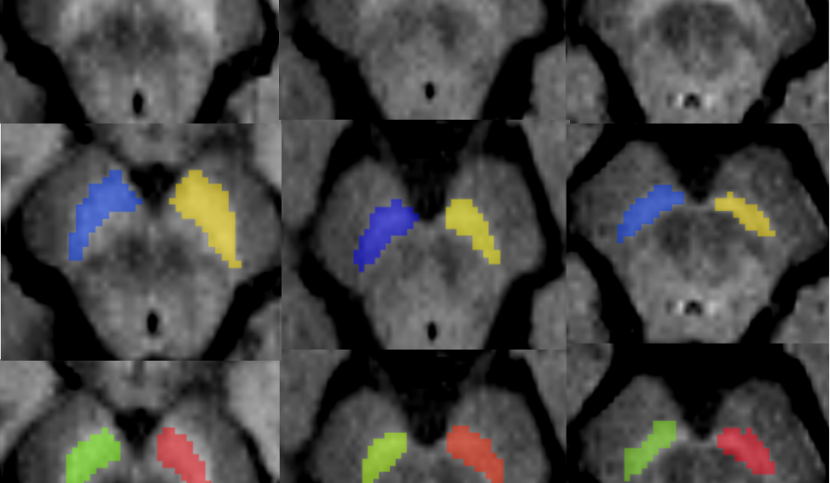Rahul Gaurav, a research Engineer in the MOV’IT team led by Pr. Stéphane Lehéricy and Pr. Marie Vidailhet, at the Paris Brain Institute, developed an artificial intelligence framework to investigate fully automatic neurodegeneration in the substantia nigra (SN) using neuromelanin-sensitive MRI in patients with isolated rapid eye movement (REM) sleep behavior disorder (iRBD), a prodromal form of Parkinsonism. The findings, published in Movement Disorders, indicated that this model was fast, user-independent and showed comparable performance with the manual method for detecting neuromelanin-based SN volume and signal changes in the patients with iRBD and Parkinson’s disease (PD). Considering the accuracy and speed of this approach, as it takes less than a fraction of a second to segment SN in a single subject, this method could be a crucial step towards the implementation of a non-rater dependent fully automatic method for studying neuromelanin changes in clinical settings and large-scale neuroimaging studies by eliminating the human factor as much as possible.
iRBD is characterized by abnormal behaviors and loss of normal muscle atonia during REM sleep. Most iRBD subjects develop Parkinson’s disease (PD) or dementia with Lewy bodies, diseases in which there is a loss of the dopaminergic neurons of the SN. At PD onset, 30 to 60% of dopaminergic neurons are already lost in the SN. As most iRBD subjects are in a prodromal parkinsonism stage, many present a mild SN impairment. Neurodegenerative changes in the SN in parkinsonism can be detected using neuromelanin-sensitive MRI technique. Neuromelanin is a pigment contained in dopaminergic neurons. Characterizing the neuromelanin signal variations by investigating the SN using manual segmentation is a time-consuming task leading to substantial inter-individual variability across raters. Hence, there is a critical need of a robust automatic framework to facilitate quantification of the neuromelanin changes in the SN.
To answer this question, Dr Gaurav developed an artificial intelligence framework that can fully automatically investigate the SN neuromelanin changes in iRBD and PD patients as compared to the controls. Subjects were prospectively recruited as part of the ICEBERG study (ClinicalTrials.gov: NCT02305147) at Paris Brain Institute. The RBD status was confirmed using video polysomnography at the Sleep department of the Pitié-Salpêtrière hospital led by Pr. Isabelle Arnulf. MRI data were acquired using 3 Tesla (PRISMA, Siemens, Germany) at the CENIR-MRI core facility of the Paris Brain Institute.
All SN measurements differed significantly between the subjects with iRBD and PD, and healthy controls. The iRBD patients demonstrated neurodegenerative SN changes at a lower level than in PD patients. Hence, this fast rater-independent automatic framework can help study the SN neuromelanin changes allowing direct non-invasive assessment of neurodegenerative changes. Furthermore, these measurements could represent target biomarkers for disease-modifying treatments.
Pr. Lehéricy’s team is further studying whether neuromelanin imaging technique could serve as a predictor of conversion in these patients or to estimate the time before the appearance of clinical motor signs and the evolution of neuromelanin changes in relation to the striatal dopaminergic function.
Source:
Gaurav, R., Pyatigorskaya N., Biondetti, E., Valabrègue, R., Yahia-Cherif, L., Mangone G., Leu-Semenescu S., Corvol J.C., Vidailhet, M., Arnulf I., and Lehéricy, S., 2022. Deep Learning-Based Neuromelanin MRI changes of Isolated REM Sleep Behavior Disorder. Movement Disorders. Mar 10. doi: 10.1002/mds.28933.
https://movementdisorders.onlinelibrary.wiley.com/doi/10.1002/mds.28933
To contact the corresponding author:
Homepage : www.rahulgaurav.com
Twitter : @SayRahulGaurav
Email : rahul.gaurav@icm-institute.org







